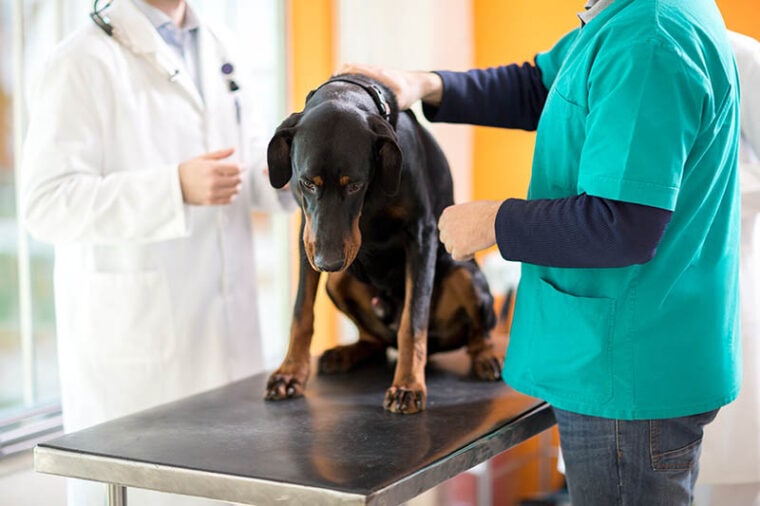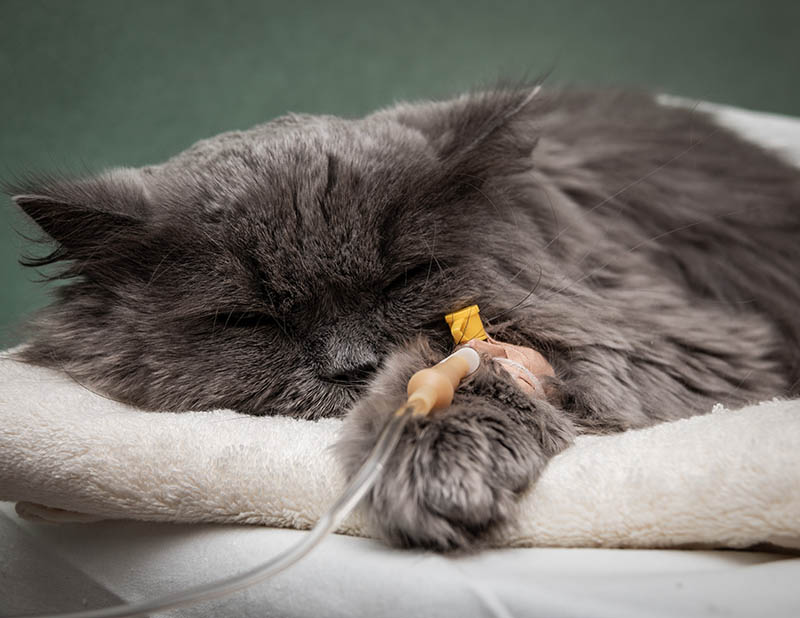
Cancer is a horrible disease, and unfortunately, it doesn’t only affect humans. As much as 25% of domestic dogs and 20–25% of cats are diagnosed with cancer! And the problem is—many pet owners don’t know how big of an issue it is. Now, November is Pet Cancer Awareness Month, and it has two goals: to honor vets and educate pet parents on cancer.
First marked in 2005, PCA has been spreading awareness and helping fellow pet moms and dads prevent and combat cancer for almost two decades now. So, how can you help your pet beat cancer? Also, what should we all do in November to aid the cause the best way we can? Let’s talk about that right now!
When Is Pet Cancer Awareness Month?
November 1st is when PCA Month officially kicks in. So, it shouldn’t be hard to remember! Will it be a Monday or a Saturday? Well, that depends on the year. For example, in 2023, Pet Cancer Awareness Month will start on a Wednesday. Next year, be ready to celebrate it and spread awareness on a Friday.

Why Is It Important?
Public awareness is a powerful thing. Many pet owners know very little about pet cancer and the impact that it has on the lives of their favorite animals. So, by spreading vital information about the most common signs and ways to treat the illness, cats, dogs, and other pets around the globe will have a better chance of fighting it off.
And one more thing: doctors, scientists, and researchers have made substantial progress in their mission to understand pet cancer better. Over the years, they’ve developed new ways to detect and treat it. And that’s what the Pet Cancer Awareness Month is all about. It informs about significant breakthroughs and minor achievements, keeping us all updated.
How Can Pet Owners Help the Cause?
If you want to contribute and aid Pet Cancer Awareness Month in growing into something bigger, you can start by taking your animal bud to a vet. This way, you’ll be able to monitor its health (have the vets keep an eye on it) and catch cancer before it develops. Ready to take this a step further? Then do consider donating to a local pet cancer foundation.
There are quite a few organizations in the US, Canada, and around the globe that help pets that suffer from cancer. So, donations will allow them to take better care of these animals. Also, don’t forget to inform as many pet parents and regular folks about PCA as you can. Many senior cat/dog owners don’t know about Pet Cancer Awareness Month. Here’s how you can do it:

Pet Cancer Statistics: A Quick Look
Cancer is the main cause of death among domestic animals—and has been for a very long time. According to veterinarians, one in five cats is diagnosed with it. It’s an even bigger issue for dogs: one in four pooches is affected by this disease. And if the dog is over 10 years old, it will have a 50% risk of developing cancer. Yes, the statistics are quite disturbing, which is another reason why Pet Cancer Awareness Month needs more recognition.
In 2019, Nationwide handled over 100,000 cancer-related pet insurance claims for 23,000 dogs and cats. That same year, $44 million was claimed by pet parents in the States (members of Nationwide) for cancer medicine and treatment (mostly for skin cancer and lymphoma). In 2023, professional diagnosis and treatment of various types of cancer is in the top three medical claims in America.
Preventing Animal Cancer With Tips From Vets
Here are some tried-and-true tips from veterinarians on how to prevent and treat cancer in a furry friend:

Cancer in Pets: Learn to Recognize the Signs
We have good news: cancer doesn’t always mean death for a pet. Thankfully, many types of cancer can be treated. The key here is to detect it at an early stage and remove it via surgery or subdue it with medication. But how do you know that your dog or cat is sick? Here are the most common signs to look for:
Which Animals Are More Susceptible to This Disease?
Bernese Mountain Dogs, Scottish Terriers, German Shepherd Dogs, and Golden Retrievers are the most at-risk dog breeds. As for felines, Siamese cats are in the high-risk group. Currently, veterinarians know about at least 100 different types of pet cancer, with lymphoma and melanoma being the most widespread kinds. The list also includes oral cancer, bone cancer, and mast cell tumors.
Conclusion
As pet parents, it’s our responsibility to take care of our furry buds via grooming, feeding, training, and, of course, medical treatment. To keep your four-legged friend healthy, have it checked by a vet at least once a year. Sadly, cancer is a big issue for a wide range of domestic animals, and that’s exactly why Pet Cancer Awareness Month is so important.
The more people know about this life-threatening disease and ways to fight it, the higher the chances for our doggos and furballs to live longer and happier lives. So, keep yourself up to date on the latest developments in cancer treatment, spread awareness in your community, and give a big “thank you” to your veterinarian!
Featured Image Credit: Lucky Business Shutterstock







